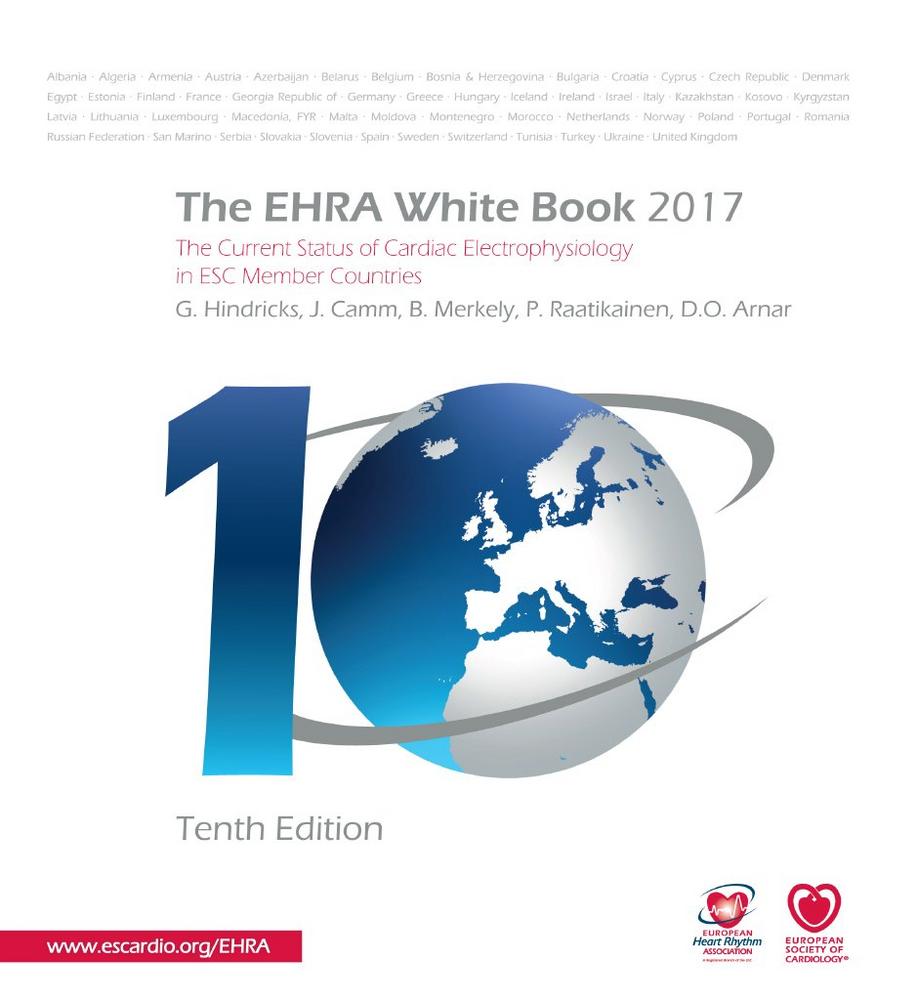Supported by BIOTRONIK, the EHRA White Book is the annual collection of data about the number of cardiac rhythm device implantations and catheter ablations. This year’s edition features contributions from 53 out of 56 European Society of Cardiology (ESC) member countries. The supplement to EHRA White Book 2017, published in the EP Europace journal, provides an in-depth 10-year comparative analysis. In addition, an interactive website, ehra-whitebook-analysis.com, has been launched, which enables users to digitally extract national data sets from the EHRA White Book and to perform additional analyses.
“At 10 years, the EHRA White Book analysis offers a unique insight into the trends of arrhythmia care,” remarked EHRA White Book co-coordinator Dr. David O. Arnar, National University Hospital of Iceland, Reykjavík. “With this invaluable analysis, we can raise awareness about inequalities in the treatment of arrhythmias not only among the cardiology community, but also among clinical administrators, policymakers and other stakeholders of care. This can potentially inspire new approaches and initiatives to improve accessibility and harmonize patient care.”
The EHRA White Book 2017 EP Europace supplement shows that implantation and ablation procedure rates per million population are highest in western European countries, followed by northern and southern European countries. While procedure rates are lower in eastern European and non-European ESC member countries, these regions also present the highest growth rate over the past 10 years.
“There is still great disparity in implantation and ablation procedure rates across Europe and beyond,” commented EHRA White Book co-coordinator Dr. Pekka Raatikainen, Central Finland Health Care District and University of Eastern Finland, Jyväskylä. “But the high growth rates in the regions that historically had relatively low activity are extremely encouraging. We still have a long way to go, but the changing trends over the past decade are a very positive sign.”
An analysis of trends found in the EHRA White Book was presented at ESC Congress 2017 by Dr. Béla Merkely, Semmelweis University, Budapest, Hungary, Chair of the EHRA National Cardiac Societies Committee until June 2017, during the session “Fighting Sudden Cardiac Death: Challenges and New Strategies” today.
“Following a decade of collaboration with EHRA, we have reached a significant milestone in our joint efforts to identify trends in cardiac arrhythmia treatment,” said Manuel Ortega, Senior Vice President at BIOTRONIK. “Our long-term cooperation with EHRA, along with our devotion to training and education programs for physicians, signifies BIOTRONIK’s steadfast commitment to working with the scientific community to tackle inequalities and promote advances in
patient care.”
The EHRA White Book 2017 and the EP Europace supplement can be downloaded from the EHRA/ESC website.
About the European Heart Rhythm Association
The European Heart Rhythm Association (EHRA) is a registered branch of the European Society of Cardiology (ESC). Its aim is to improve the quality of life and reduce sudden cardiac death by limiting the impact of heart rhythm disturbances. The EHRA ensures the dissemination of knowledge and standard setting; provides continuous education, training and certification to physicians and allied professionals involved in the field of cardiac arrhythmias with a special focus on Atrial Fibrillation (AF) and Electrophysiology (EP). The EHRA releases international consensus documents and position papers, it is a source of high quality, unbiased, evidence based, scientific information that promotes the quality of care for patients with AF, and for, has also dedicated a website for patients “afibmatters.org”.
For more information, visit: www.biotronik.com / www.escardio.org/EHRA
Twitter: @BIOTRONIK_News / @escardio
LinkedIn: www.linkedin.com/company/biotronik
A global leader in cardio- and endovascular medical technology, BIOTRONIK is headquartered in Berlin, Germany, and represented in over 100 countries. Several million patients have received BIOTRONIK implants designed to save and improve the quality of their lives, or have been treated with BIOTRONIK coronary and peripheral vascular intervention products. Since its development of the first German pacemaker in 1963, BIOTRONIK has engineered many innovations, including BIOTRONIK Home Monitoring®; Pulsar, the world’s first 4 F compatible stent for treating long lesions; Orsiro, the ultrathin 60 micron drug-eluting stent; and the world’s first implantable cardioverter defibrillators and heart failure therapy devices with ProMRI® technology.
BIOTRONIK
Woermannkehre 1
12359 Berlin
Telefon: +49 (30) 68905-0
Telefax: +49 (30) 6852804
http://www.biotronik.com
Communications & PR Manager
Telefon: +49 (30) 689051414
E-Mail: presse@biotronik.com
